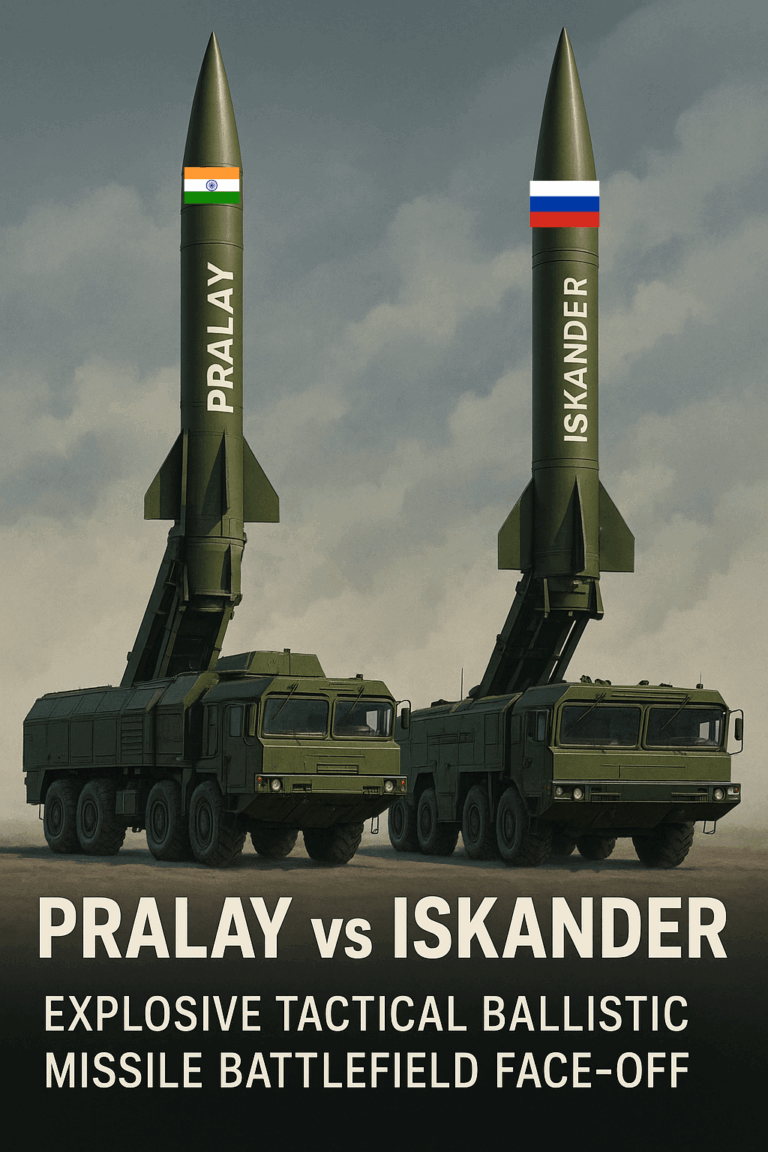
Tactical Ballistic Missiles, commonly known as TBMs, are short-range missiles designed for use during battlefield operations. Unlike intercontinental ballistic missiles (ICBMs) that travel across continents, TBMs are meant for regional deployment, with strike ranges typically between 100 and 1,000 kilometers. Their key role is to deliver fast and accurate attacks against critical enemy positions such as airfields, command centers, supply depots, and troop concentrations.
TBMs are valued in military operations for several reasons:
- Rapid Deployment: They can be launched quickly in fast-changing combat situations.
- High Mobility: Most TBMs are launched from mobile platforms, making them difficult to locate or pre-emptively target.
- Difficult to Intercept: Their speed and maneuverability often allow them to bypass enemy missile defense systems.
- Significant Impact: Despite their shorter range, they can inflict severe damage in high-value tactical zones.
Two leading examples of TBMs today include India’s Pralay missile and Russia’s Iskander missile system. Both systems reflect the evolving needs of modern warfare, where speed, precision, and adaptability are critical.
India’s Pralay Missile: A Precision Strike Tool
The Pralay missile represents a significant advancement in India’s conventional missile capabilities. Developed by the Defence Research and Development Organisation (DRDO), Pralay is a solid-fueled, surface-to-surface tactical ballistic missile designed to reinforce India’s ability to carry out quick-response precision strikes.
Key Features of the Pralay Missile
- Range: Capable of hitting targets between 150 to 500 kilometers. Advanced variants may extend up to 700 kilometers.
- Speed: Achieves speeds of over Mach 5 (approx. 6,100 km/h), allowing fast time-to-target and reduced reaction window for the enemy.
- Warhead Configuration: Equipped with conventional high-explosive warheads, including fragmentation and penetration bombs weighing between 350–700 kilograms.
- Guidance System: Incorporates a combination of satellite navigation (GPS or IRNSS) and inertial navigation systems, enabling it to strike targets with sub-10 meter accuracy.
- Mobility and Launch: Launched from road-mobile Transporter Erector Launchers (TELs) for high operational flexibility.
- Survivability Features: The missile follows a quasi-ballistic trajectory and includes a maneuverable re-entry vehicle (MaRV) to help evade missile defenses.
Strategic Relevance:
Pralay is designed to bolster India’s non-nuclear offensive capabilities, allowing high-impact strikes without escalating to nuclear conflict. It is currently intended for domestic deployment only and has not been offered for export.
Russia’s Iskander Missile: A Versatile Combat-Proven System
The Iskander missile system (NATO designation: SS-26 ‘Stone’; official Russian name: 9K720 Iskander) is one of the most prominent TBMs in global arsenals. Developed as a successor to Soviet-era missiles such as the Scud, Iskander plays a central role in Russia’s battlefield doctrine.
Missiles on Hold: Russia’s Tantalum Supply Crisis Disrupts Deadly Kh-47 and Kh-101 Programs
Key Features of the Iskander Missile
- Range: Operates effectively within 50 to 500 kilometers, with some extended-range variants reaching up to 700 kilometers.
- Speed: Travels at speeds of up to Mach 7, enhancing its ability to outrun interception systems.
- Warhead Options: Offers a broad range of payloads, including:
- High-explosive fragmentation
- Cluster munitions
- Penetrating warheads
- Electromagnetic pulse (EMP) devices
- Nuclear warheads (in select versions)
- Guidance System: Uses a multi-layered navigation approach that includes inertial guidance, GLONASS satellite input, and optical terminal guidance, ensuring high accuracy (estimated circular error probable [CEP] of 5–7 meters).
- Launch System: Deployed via a mobile, all-weather TEL platform tested under diverse combat conditions.
Combat Record:
The Iskander missile has been deployed in real-world military operations, including in Georgia (2008), Syria, and more recently, in the Ukraine conflict. Its battlefield experience confirms its reliability, precision, and strategic value in live combat scenarios.
Bold Move: Denmark to Strengthen Ukrainian Defense with €830 Million in Seized Russian Funds
Pralay vs. Iskander: A Tactical Comparison
| Feature | Pralay (India) | Iskander (Russia) |
|---|---|---|
| Operational Range | 150–500 km (up to 700 km in advanced models) | 50–500 km (extended versions up to 700 km) |
| Speed | Mach 5+ | Up to Mach 7 |
| Warhead Type | Conventional only (HE, fragmentation, penetrator) | Conventional + Nuclear + Special payloads |
| Accuracy (CEP) | <10 meters | 5–7 meters |
| Guidance System | Satellite + Inertial Navigation | Satellite + Inertial + Optical Terminal |
| Deployment Platform | Road-mobile TEL | Road-mobile TEL |
| Export/Use Record | Not exported; under induction by Indian Armed Forces | Exported to select allies; used in combat |
Comparative Assessment:
- Speed & Accuracy: The Iskander has a slight edge in speed and guidance precision.
- Payload Flexibility: Iskander supports a wider variety of mission-specific warheads, including nuclear and EMP variants.
- Combat Validation: Iskander is a combat-proven platform, offering insights into its operational performance under wartime conditions.
- Modern Engineering: Pralay leverages new-generation propulsion and guidance technologies, emphasizing precision and survivability in high-threat environments.